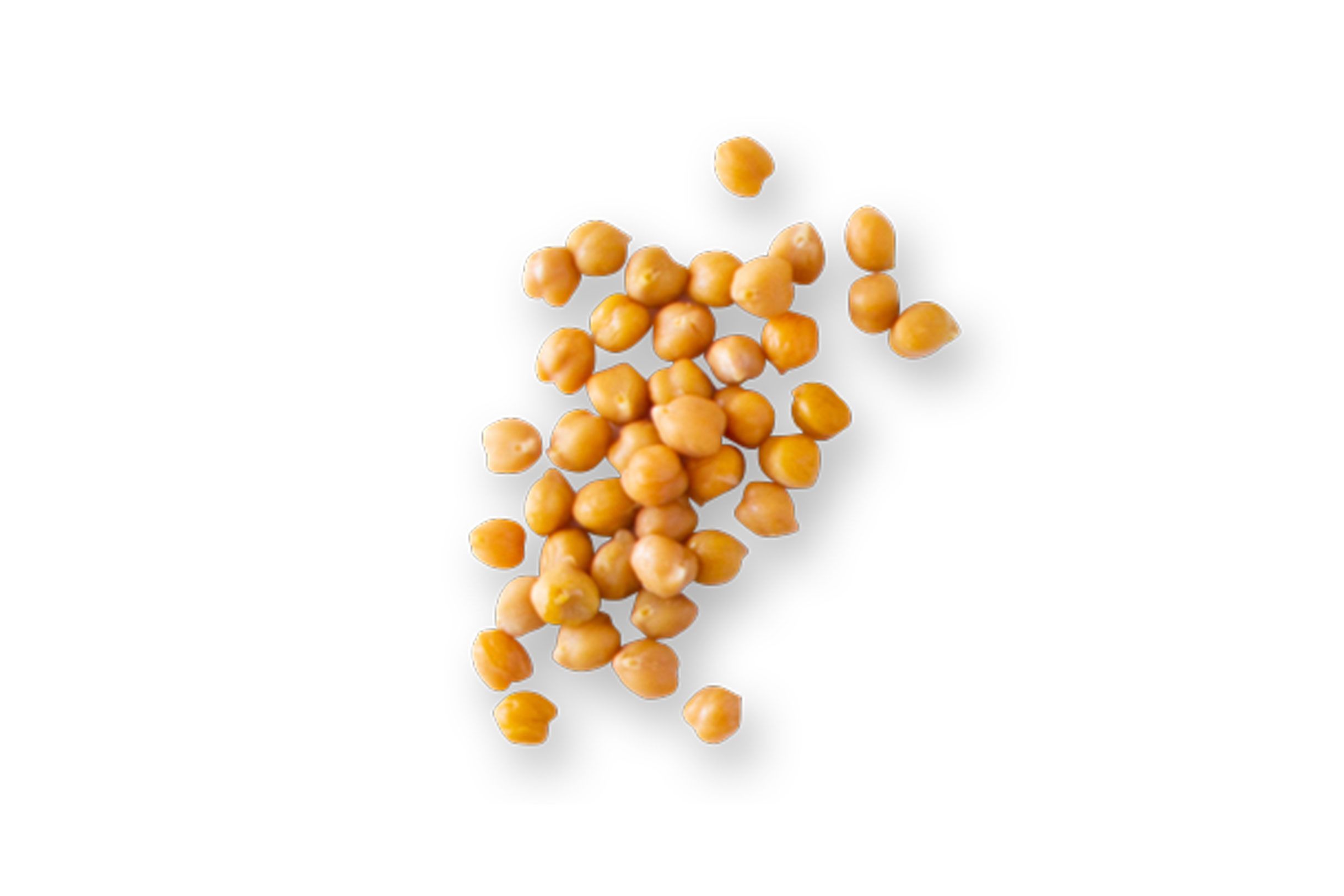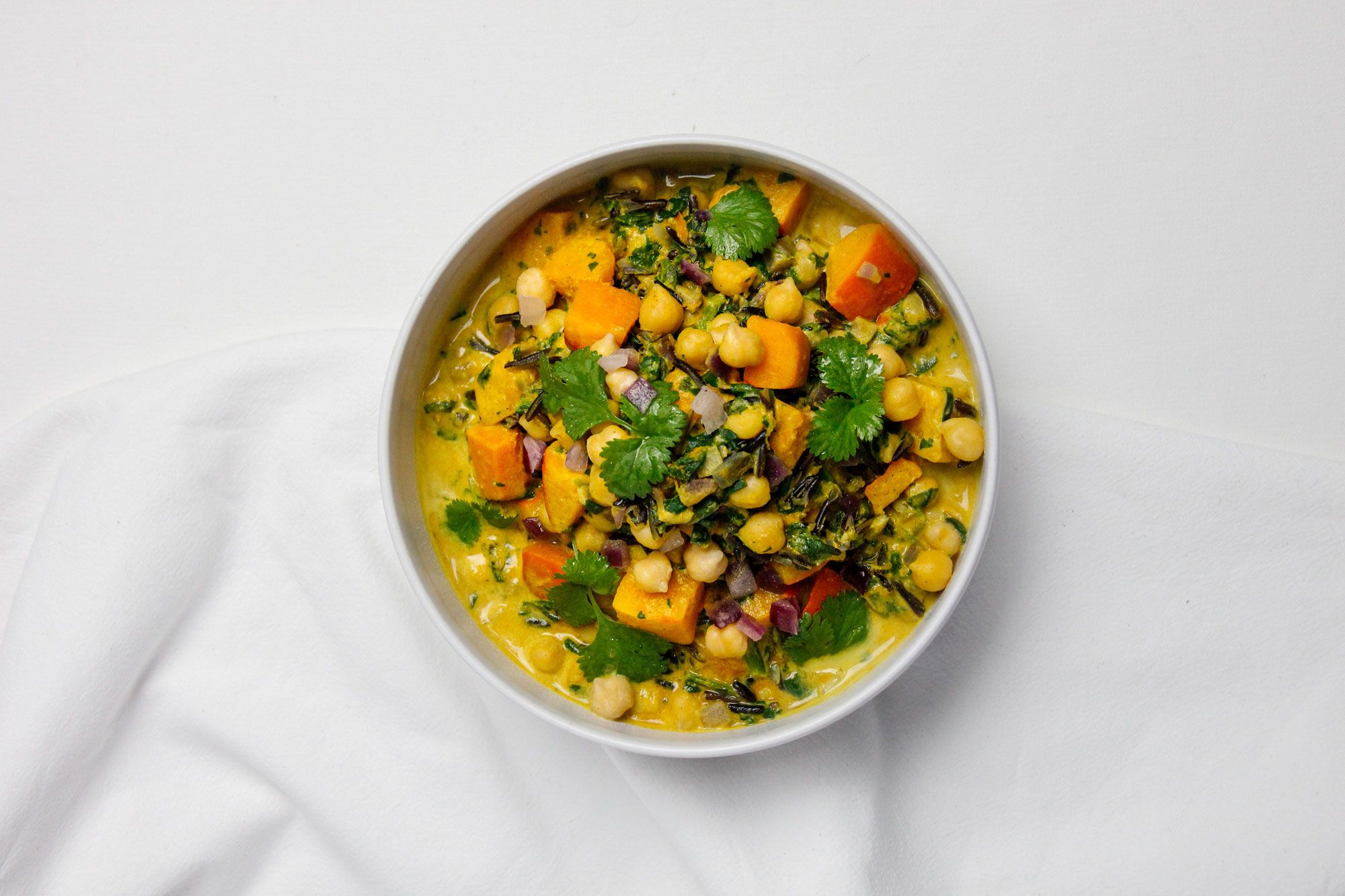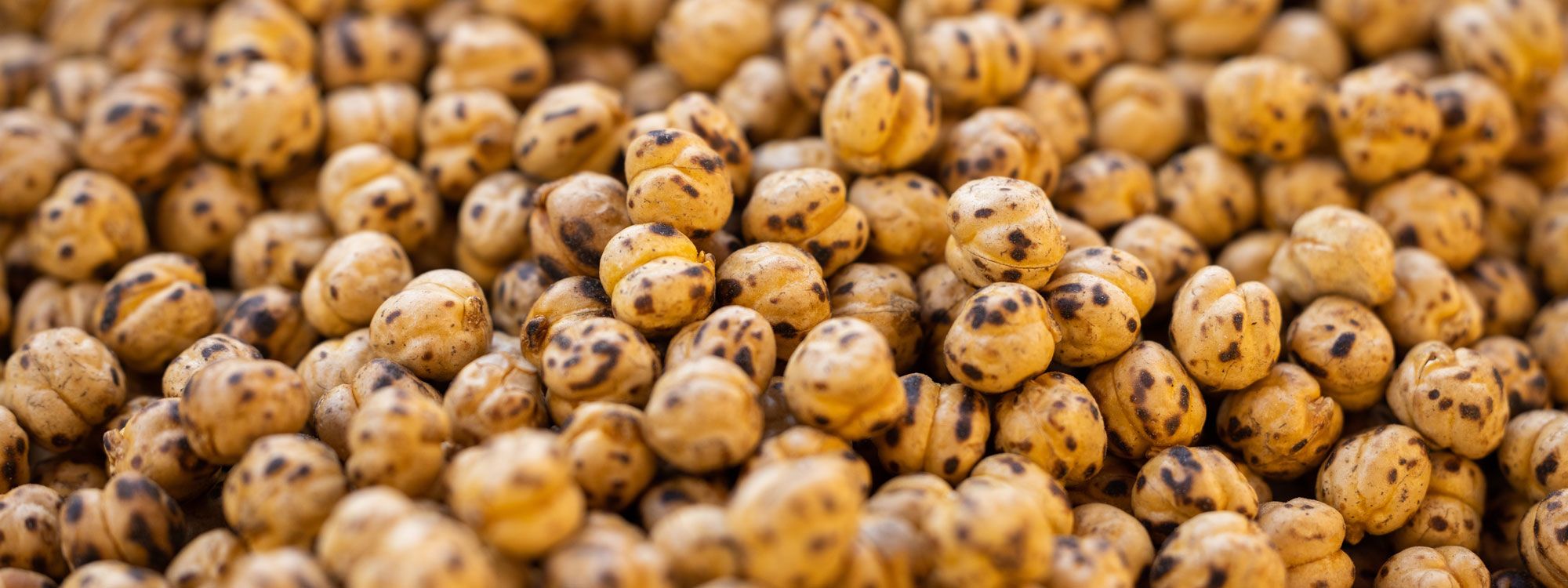Chickpeas
Versatile plant-based protein
Intro
Legumes are a hot trend right now. And top of the list is the famous chickpea. For centuries, it's been a core component of Middle Eastern cuisines. We have chickpeas to thank for blessing us with hummus, falafel and other mouth-watering delicacies.
Most people don’t know that chickpeas are not only impressive flavour-wise, they’re real nutritient bombs. They are high in protein and support our digestive and cardiovascular system. They can help lower your blood sugar levels.

What are chickpeas?
The chickpea (Cicer arietinum) is a legume and belongs to the genus of chickpeas (Cicer) in the subfamily of the papilionaceous plants. Even though pea is in its name, chickpeas are not related to peas.
But where does the chickpea get its name from? Simple: it derives from the Latin word "cicer", pronounced "kiker", which means nothing other than "pea". So actually, the chickpea is a "pea pea".

Where do chickpeas come from?
8000 years ago, chickpeas were cultivated in Asia Minor and brought to Europe via trade ships.
Chickpeas thrive in warm environments, and are most commonly grown in Indian, Pakistan, northern Africa, Spain and Turkey.
Which varieties are there?
These types are the most popular:
Kabuli
-Medium sized seeds, beige colour
Amethyst
-Small, beige coloured seed
Desi
-Small, dark to black seeds
Gulabi
-Small to medium sized, smooth and beige coloured
When are chickpeas in season?
Dried or conserved, chickpeas can be found all year long.
Our tips for how you can prepare chickpeas:*
Currys, salads, veggie pans, hummus and other dips, bread spreads, falafel and other patties and baked goods (e.g. crackers)
*Chickpeas should not be consumed raw as they can be poisonous
Chickpeas Nutrition Facts per 100g:
| Typical Values | 100g |
|---|---|
| Calories | 180g |
| Fat | 3g |
| Carbohydrates | 30g |
| Fibre | 8.6g |
| Sugar | 5.3g |
| Protein | 9.5g |
Nutrients found in chickpeas:
Vitamins:
B-Vitamins, Vitamin C, Vitamin E and Folic acid
Minerals:
Sodium, Potassium, Calcium, Magnesium, Phosphate, Iron and Zinc

